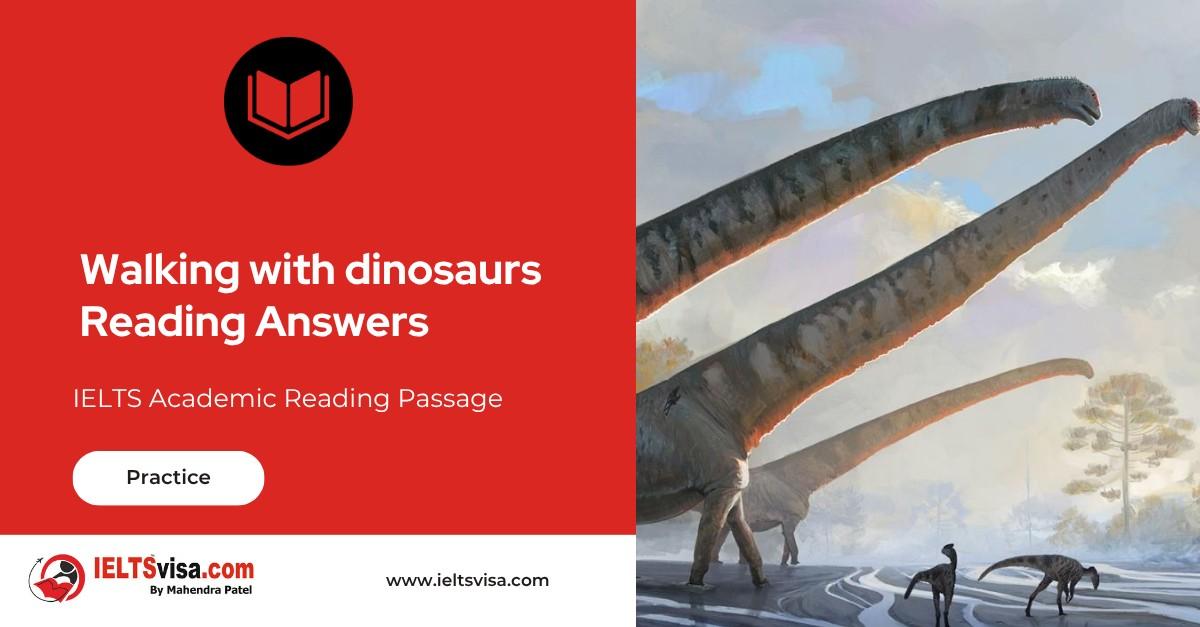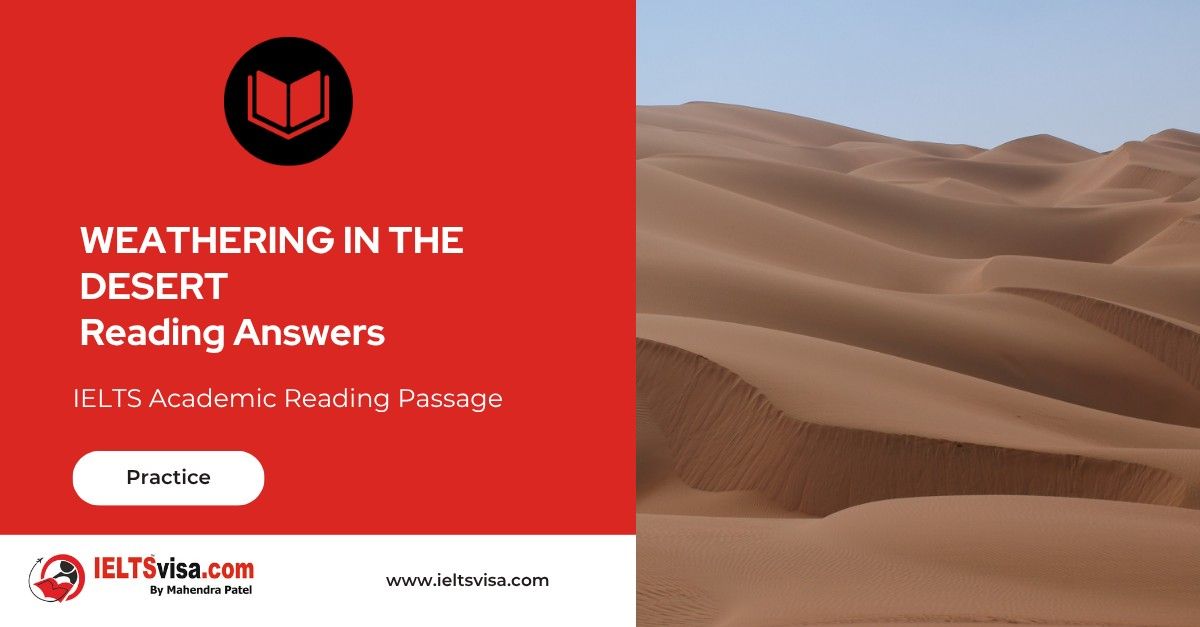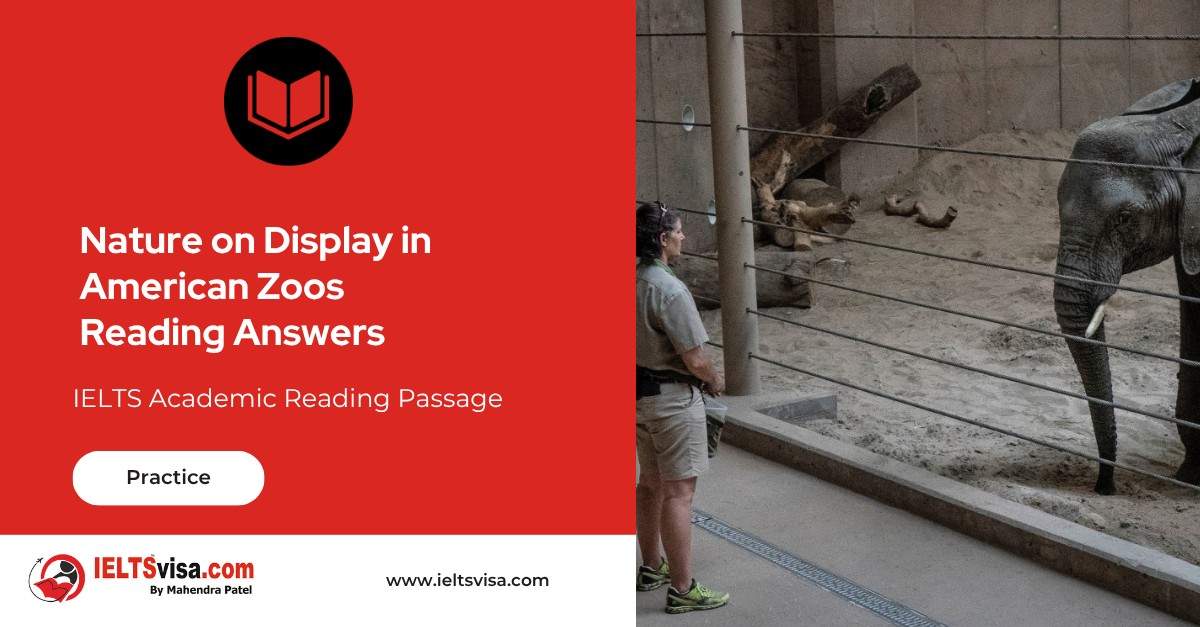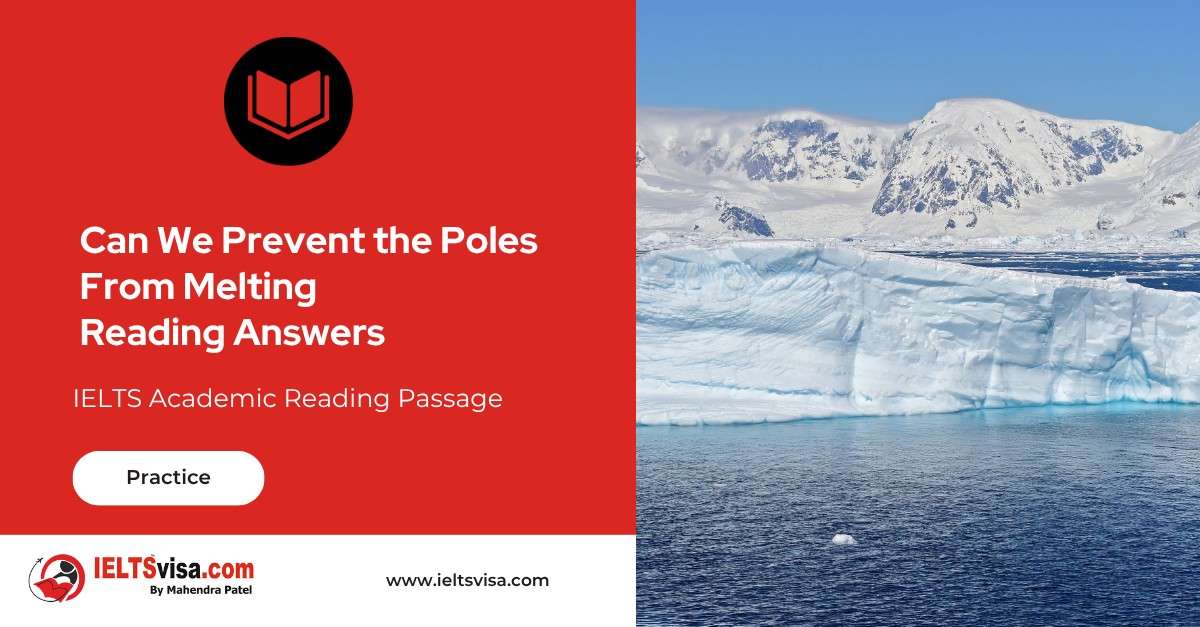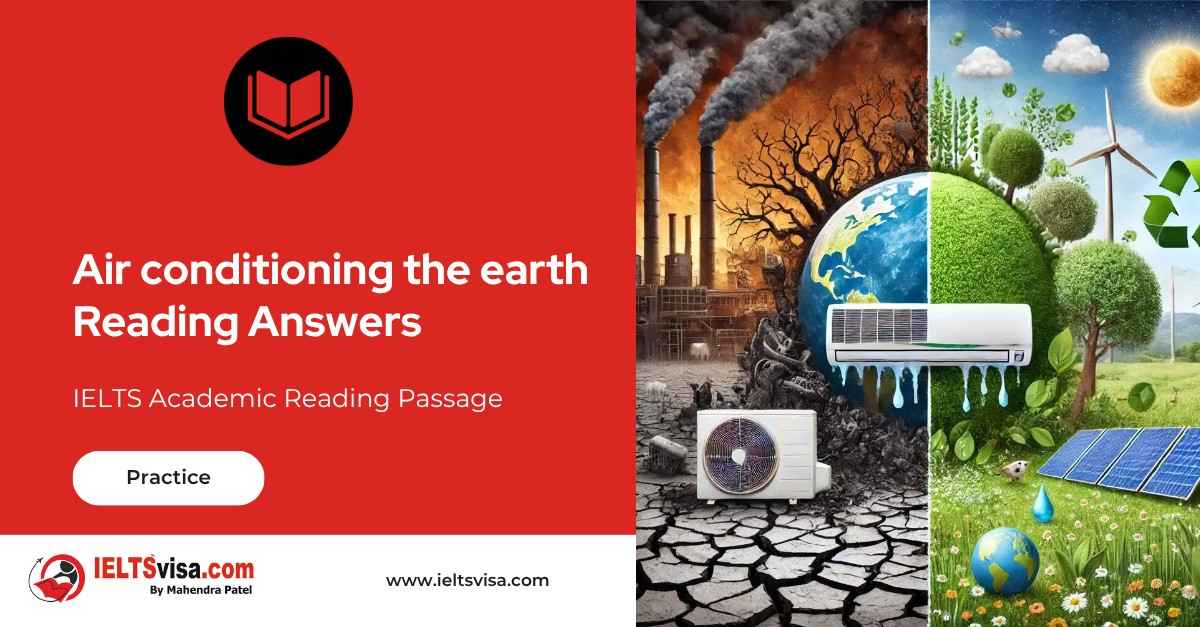Antarctica – In From The Cold ? Reading Answer
IELTS Academic Reading Passage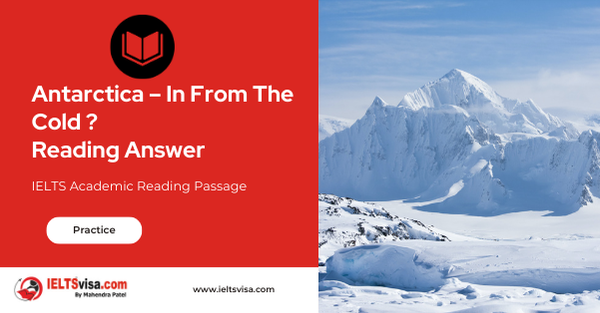
A
A little over a century ago, men of the ilk of Scott, Shackleton and Mawson battled against Antarctica’s blizzards, cold and deprivation. In the name of Empire and in an age of heroic deeds they created an image of Antarctica that was to last well into the 20th century – an image of remoteness, hardship, bleakness and isolation that was the province of only the most courageous of men. The image was one of a place removed from everyday reality, of a place with no apparent value to anyone.
B
As we enter the 21st century, our perception of Antarctica has changed. Although physically Antarctica is no closer and probably no warmer, and to spend time there still demands a dedication not seen in ordinary life, the continent and its surrounding ocean are increasingly seen to an integral part of Planet Earth, and a key component in the Earth System. Is this because the world seems a little smaller these days, shrunk by TV and tourism, or is it because Antarctica really does occupy a central spot on Earth’s mantle? Scientific research during the past half-century has revealed – and continues to reveal – that Antarctica’s great mass and low temperature exert a major influence on climate and ocean circulation, factors which influence the lives of millions of people all over the globe.
C
Antarctica was not always cold. The slow break-up of the super-continent Gondwana with the northward movements of Africa, South America, India and Australia eventually created enough space around Antarctica for the development of an Antarctic Circumpolar Current (ACC), that flowed from west to east under the influence of the prevailing westerly winds. Antarctica cooled, its vegetation perished, glaciation began and the continent took on its present-day appearance. Today the ice that overlies the bedrock is up to 4km thick, and surface temperatures as low as – 89.2deg C have been recorded. The icy blast that howls over the ice cap and out to sea – the so-called katabatic wind – can reach 300 km/hr, creating fearsome wind-chill effects.
D
Out of this extreme environment come some powerful forces that reverberate around the world. The Earth’s rotation, coupled to the generation of cells of low pressure off the Antarctic coast, would allow Astronauts a view of Antarctica that is as beautiful as it is awesome. Spinning away to the northeast, the cells grow and deepen, whipping up the Southern Ocean into the mountainous seas so respected by mariners. Recent work is showing that the temperature of the ocean may be a better predictor of rainfall in Australia than is the pressure difference between Darwin and Tahiti – the Southern Oscillation Index. By receiving more accurate predictions, graziers in northern Queensland are able to avoid overstocking in years when rainfall will be poor. Not only does this limit their losses but it prevents serious pasture degradation that may take decades to repair. CSIRO is developing this as a prototype forecasting system, but we can confidently predict that as we know more about the Antarctic and the Southern Ocean we will be able to enhance and extend our predictive ability.
E
The ocean’s surface temperature results from the interplay between deep-water temperature, air temperature and ice. Each winter between 4 and 19 million square km of sea ice form, locking up huge quantities of heat close to the continent. Only now can we start to unravel the influence of sea ice on the weather that is experienced in southern Australia. But in another way, the extent of sea ice extends its influence far beyond Antarctica. Antarctic krill – the small shrimp-like crustaceans that are the staple diet for baleen whales, penguins, some seals, flighted sea birds and many fish – breed well in years when sea ice is extensive and poorly when it is not. Many species of baleen whales and flighted sea birds migrate between the hemispheres and when the krill are less abundant they do not thrive.
F
The circulatory system of the world’s oceans is like a huge conveyor belt, moving water and dissolved minerals and nutrients from one hemisphere to the other, and from the ocean’s abyssal depths to the surface. The ACC is the longest current in the world and has the largest flow. Through it, the deep flows of the Atlantic, Indian and Pacific Oceans are joined to form part of single global thermohaline circulation. During winter, the howling katabatics sometimes scour the ice off patches of the sea’s surface leaving large ice-locked lagoons, or ‘polynyas’. Recent research has shown that as fresh sea ice forms, it is continuously stripped away by the wind and maybe blown up to 90km in a single day. Since only freshwater freezes into ice, the water that remains becomes increasingly salty and dense, sinking until it spills over the continental shelf. Coldwater carries more oxygen than warm water, so when it rises, well into the northern hemisphere, it reoxygenates and revitalises the ocean. The state of the northern oceans and their biological productivity owe much to what happens in the Antarctic.
Questions 1-5
The reading Passage has seven paragraphs A-F
Which paragraph contains the following information?
Write the correct letter A-F, in boxes 1-5 on your answer sheet.
1. The example of research on weather prediction on agriculture
2. Antarctic sea ice brings life back to the world oceans’
3. A food chain that influences the animals living pattern based on Antarctic fresh sea ice
4. The explanation of how atmosphere pressure above Antarctica can impose an effect on global climate change
5. Antarctica was once thought to be a forgotten and insignificant continent
Question 6-8
Summary
Please match the natural phenomenon with correct determined factor
Choose the correct answer from the box
Write the correct letter A-F, in boxes 6-8 on your answer sheet.
6. Globally, mass Antarctica’s size and 6……………….. influence climate change
7. 7……………….. contributory to western wind
8. Southern Oscillation Index based on air pressure can predict 8……………….. in Australia
A. Antarctic Circumpolar Current (ACC)
B. katabatic winds
C. rainfall
D. temperature
E. glaciers
F. pressure
Questions 9-13
Choose the correct letter A, B, C or D.
Write your answer in box 22-26 on your answer sheet.
9. In paragraph B, the author wants to tell which of the following truth about the Antarctic?
A. To show Antarctica has been a central topic of global warming in Mass media
B. To illustrate its huge sea ice brings food to million lives to places in the world
C. To show it is the heart and its significance to the global climate and current
D. To illustrate it locates in the central spot on Earth geographically
10. Why do Australian farmers keep an eye on the Antarctic ocean temperature?
A. Help farmers reduce their economic or ecological losses
B. Retrieve grassland decreased in the overgrazing process
C. Prevent animal from dying
D. A cell provides fertilizer for the grassland
11. What is the final effect of katabatic winds?
A. Increase the moving speed of ocean current
B. Increase salt level near the ocean surface
C. Bring fresh ice into southern oceans
D. Pile up the mountainous ice cap respected by mariners
12. The break of the continental shelf is due to the
A. Salt and density increase
B. Salt and density decrease
C. global warming resulting in a rising temperature
D. fresh ice melting into ocean water
13. The decrease in the number of Whales and seabirds is due to
A. killers whales are more active around
B. Sea birds are affected by high sea level salty
C. less sea ice reduces the productivity of food source
D. seals fail to reproduce babies
Solution:Antarctica – In From The Cold ? Reading Answer
| 1. D | 8. C |
| 2. F | 9. C |
| 3. E | 10. A |
| 4. C | 11. C |
| 5. A | 12. C |
| 6. D | 13. C |
| 7. A |
Review and Practice
- Regularly practice with IELTS reading samples and time yourself to get used to the pressure of the exam.
- Review your mistakes to understand where you went wrong and how to avoid similar errors in the future.
Our Books
Master IELTS Speaking Part 1
IELTS Writing Task 1 Book
IELTS Writing Task 2 Book
Antarctica - in from the cold ? Reading Answer Explanation
| Question NO | Question Type | Answer | Keywords | Supporting Sentence | Location of Keywords | Explanation |
|---|---|---|---|---|---|---|
| 1 | Contains the following | D | Australia, temperature, agriculture, pressure difference | “Recent work is showing that the temperature of the ocean may be a better predictor of rainfall in Australia than is the pressure difference between Darwin and Tahiti.” | Para D, lines 5-7 | As per paragraph D, “recent work is showing that the temperature of the ocean may be a better predictor of rainfall in Australia than is the pressure difference between Darwin and Tahiti.” This indicates research on weather prediction for agriculture by CSIRO. |
| 2 | Contains the following | F | cold water, oxygen, ocean, northern hemisphere | “Cold water carries more oxygen than warm water, so when it rises, well into the northern hemisphere, it reoxygenates and revitalizes the ocean.” | Para F, lines 10-12 | Cold water carries more oxygen, and when it rises, it reoxygenates and revitalizes the ocean, as described in paragraph F. |
| 3 | Contains the following | E | sea birds, baleen whales | “Antarctic krill — the small shrimp-like crustaceans that are the staple diet for baleen whales, penguins, some seals, flighted sea birds, and many fish — breed well in years when sea ice is extensive and poorly when it is not.” | Para E, lines 5-8 | This shows how Antarctic krill, a key food source in the ecosystem, is influenced by the extent of sea ice, affecting animals like baleen whales and sea birds. |
| 4 | Contains the following | C | bedrock, surface temperatures, ice | “Today the ice that overlies the bedrock is up to 4km thick, and surface temperatures as low as -89.2°C have been recorded.” | Para C, lines 6-8 | Paragraph C discusses extreme temperatures and the thickness of ice over bedrock in Antarctica, confirming the severity of the region’s climate. |
| 5 | Contains the following | A | Antarctica, image, insignificant | “The image was one of a place removed from everyday reality, of a place with no apparent value to anyone.” | Para A, lines 4-6 | Paragraph A talks about how Antarctica was once seen as insignificant, with no value to anyone, reflected in the term ‘removed from everyday reality.’ |
| 6 | Choose the correct answer | D | climate, ocean circulation, Antarctica | “Antarctica’s great mass and low temperature exert a major influence on climate and ocean circulation.” | Para B, lines 7-9 | Paragraph B explains how Antarctica’s mass and low temperatures have a significant impact on climate and ocean currents. |
| 7 | Choose the correct answer | A | South America, India, ACC | “Northward movements of Africa, South America, India, and Australia eventually created enough space around Antarctica for the development of an Antarctic Circumpolar Current (ACC), that flowed from west to east under the influence of the prevailing westerly winds.” | Para C, lines 3-4 | Paragraph C discusses how the movement of continents around Antarctica led to the formation of the Antarctic Circumpolar Current (ACC). |
| 8 | Choose the correct answer | C | temperature, rainfall, Australia | “Recent work is showing that the temperature of the ocean may be a better predictor of rainfall in Australia.” | Para D, lines 5-8 | Paragraph D discusses that ocean temperature is a better predictor of rainfall in Australia, highlighting the relationship between temperature and rainfall. |
| 9 | Choose the correct letter | C | globe, millions of people, low temperature, global climate, ocean circulation | “Antarctica’s great mass and low temperature exert a major influence on climate and ocean circulation, factors which influence the lives of millions of people all over the globe.” | Para B, lines 7-9 | Paragraph B confirms that Antarctica’s mass and temperature affect global climate, which impacts millions of people worldwide. |
| 10 | Choose the correct letter | A | despair, pasture degradation, losses, farmers | “Not only does this limit their losses, but it prevents serious pasture degradation that may take decades to repair.” | Para D, lines 9-11 | Paragraph D explains how certain measures help limit losses and prevent long-term pasture degradation for farmers. |
| 11 | Choose the correct letter | A | Antarctic, continental shelf | “Many species of baleen whales and flighted sea birds migrate between the hemispheres and when the krill are less abundant they do not thrive.” | Para F, lines 5-7 | Paragraph F discusses how Antarctic waters influence migration patterns of baleen whales and sea birds, especially when krill is less abundant. |
| 12 | Choose the correct letter | C | baleen whales, birds, migrate | “The howling katabatic sometimes scour the ice off patches of the sea’s surface leaving large ice-locked lagoons.” | Para E, lines 9-11 | Paragraph E mentions the migration of baleen whales and sea birds and how the presence of krill influences their migration, linking to the food chain in the region. |
| 13 | Choose the correct letter | C | sea’s surface, lagoons, katabatic | “The water that remains becomes increasingly salty and dense, sinking until it spills over the continental shelf.” | Para F, lines 5-7 | Paragraph F explains how katabatic winds help form ice-locked lagoons and impact the salinity of the sea, contributing to ocean dynamics. |
Practice IELTS Other Modules
IELTS Listening
The IELTS Listening test assesses how well you can understand spoken English in various contexts. It lasts about 30 minutes and is divided into four sections with a total of 40 questions. The listening tasks become increasingly difficult as the test progresses.
IELTS Academic Reading
The IELTS Academic Reading section assesses your ability to understand and interpret a variety of texts in academic settings. It is designed to evaluate a range of reading skills, including skimming for gist, reading for main ideas, reading for detail, understanding inferences, and recognizing a writer's opinions and arguments.
IELTS Speaking
The IELTS Speaking test assesses your ability to communicate in English on everyday topics. It lasts 11-14 minutes and consists of three parts: introduction, cue card, and a discussion based on the cue card topic.
IELTS General Reading
IELTS General Reading tests your ability to understand and interpret various types of texts. Here are some key areas and types of content you can expect to encounter in the reading section, along with tips for effective preparation.
IELTS Academic Writing Task 1
In IELTS Academic Writing Task 1, you are presented with a visual representation of information, such as graphs, charts, tables, or diagrams, and you are required to summarize, compare, or explain the data in your own words.
IELTS General Writing Task 1
In IELTS General Writing Task 1, you are required to write a letter based on a given situation. The letter can be formal, semi-formal, or informal, depending on the prompt. Here’s a breakdown of the key components to include in your letter
IELTS Academic Writing Task 2
In IELTS Academic Writing Task 2, you are required to write an essay in response to a question or topic. Here’s a guide to help you understand the essential elements of this task
IELTS Exam Tips
To succeed in the IELTS exam, practice regularly, familiarize yourself with the test format, improve your vocabulary, develop time management skills, and take mock tests to build confidence.
Grammer for IELTS
Grammar is the foundation of effective communication in English. Understanding tense usage, subject-verb agreement, and sentence structure enhances clarity and coherence in writing and speaking.
Vocabulary for IELTS
Vocabulary plays a crucial role in the IELTS (International English Language Testing System) exam, especially in the Speaking and Writing sections. Here’s an overview of why vocabulary is important and how it impacts your performance
RECENT IELTS SAMPLES QUESTIONS AND ANSWERS
Walking with dinosaurs
Peter L. Falkingham and his colleagues at Manchester University are developing techniques that...
Money as the Unit of Amount Reading Answers
The most difficult aspect of money to understand is its function as a unit of account. In...
WEATHERING IN THE DESERT
In the deserts, as elsewhere, rocks at the earth's surface are changed by weathering, which...
Nature on Display in American Zoos
The first zoo in the United States opened in Philadelphia in 1874, followed by the Cincinnati...
Can We Prevent the Poles From Melting
Such is our dependence on fossil fuels, and such is the volume of carbon dioxide we have...
Air conditioning the earth reading answers
The circulation of air in the atmosphere is activated by convection, the transference of heat...

